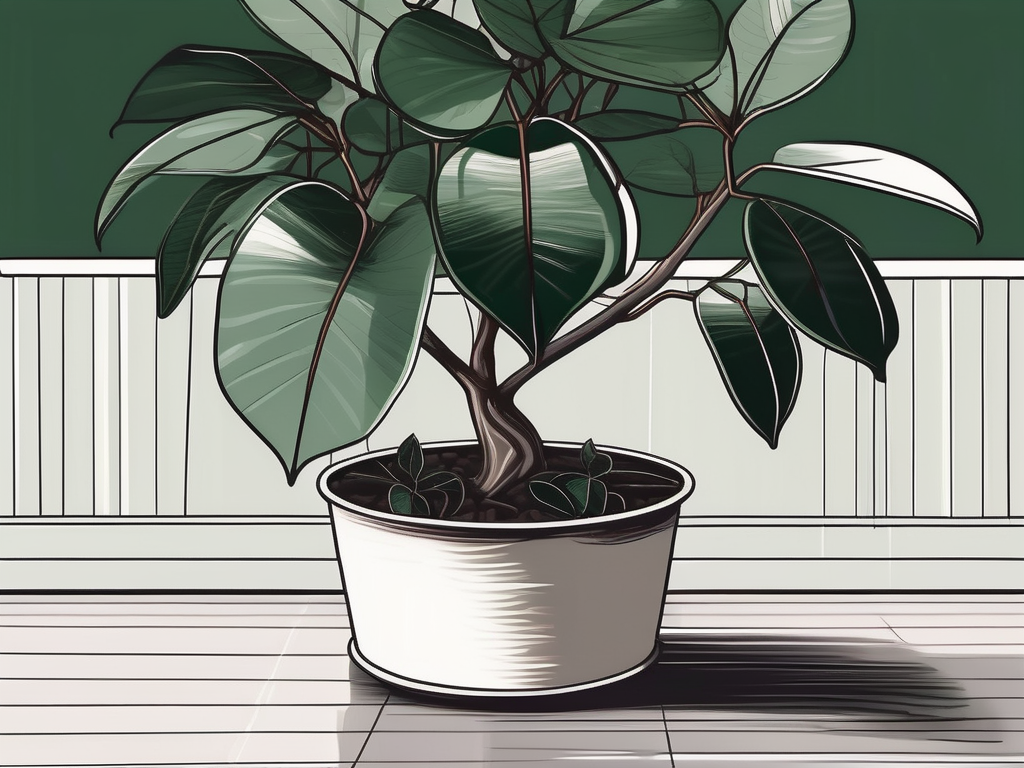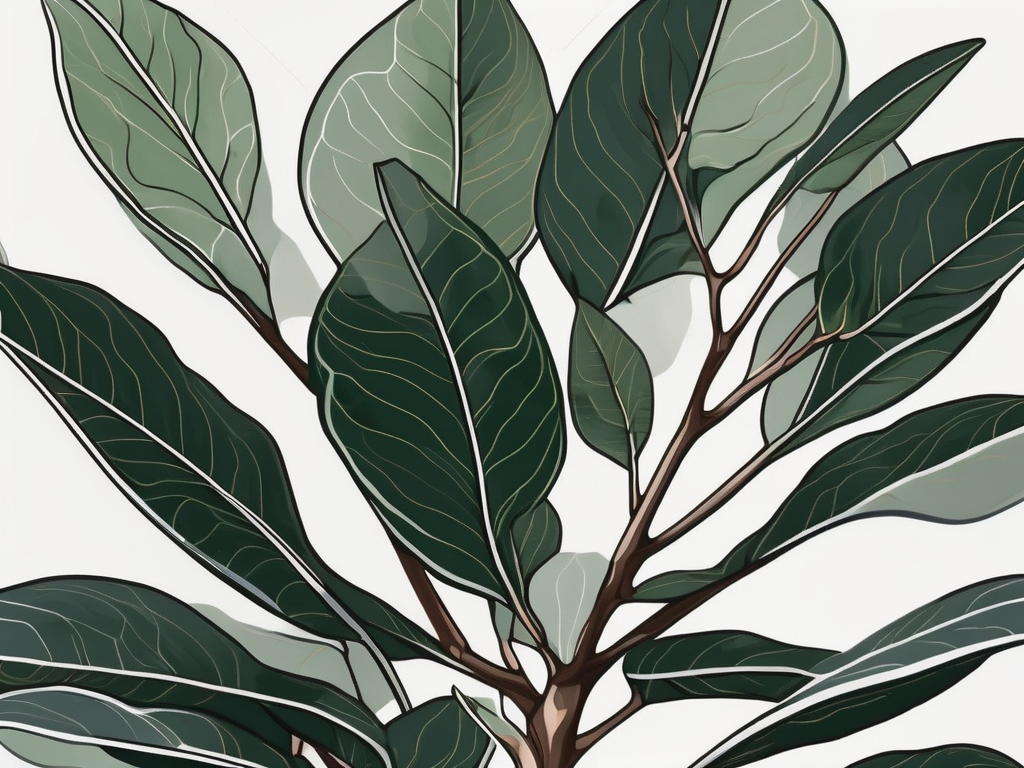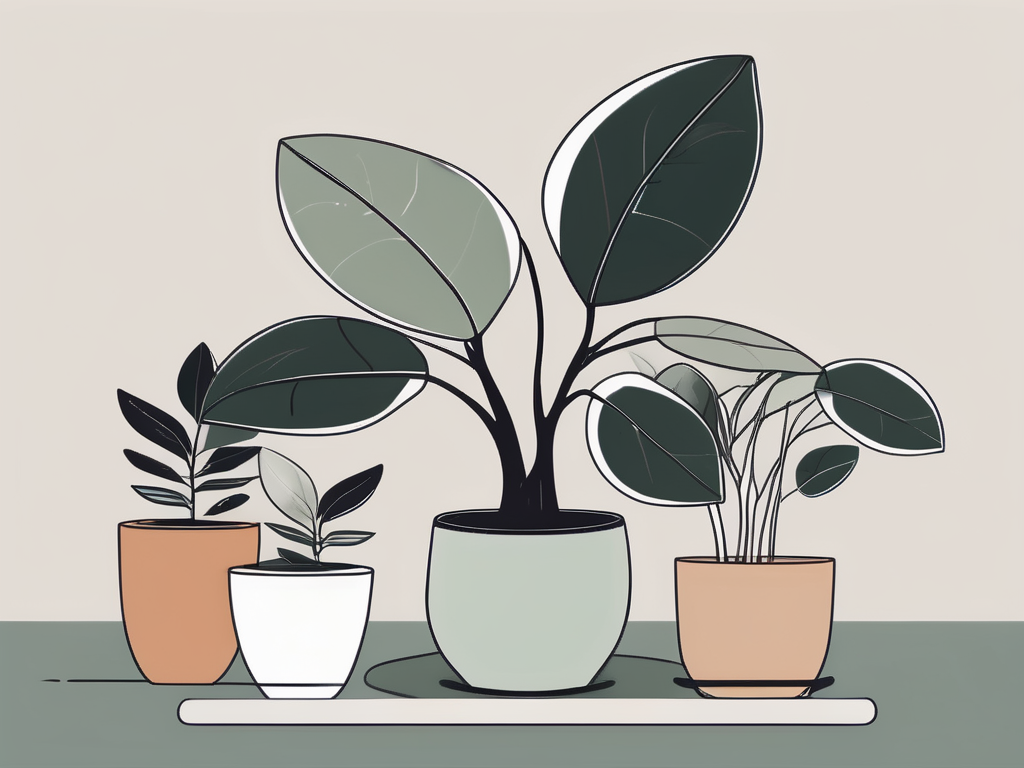
The rubber tree, with its glossy leaves and impressive stature, is a favorite among plant lovers for its easy-going nature and striking appearance. However, like any plant, it can encounter its share of challenges. One such issue that's often overlooked is when a rubber tree becomes root bound. It's a common situation that can significantly affect your plant's health if not addressed properly.
This article will guide you through understanding what being root bound means for your rubber tree, how to identify the signs, and what steps you can take to help your plant thrive again. We'll also touch on some handy tips for ongoing care to keep your rubber friend happy and healthy.
What Does 'Root Bound' Really Mean?
When we talk about a plant being root bound, we're referring to a situation where the roots have outgrown their pot and started to wrap around themselves. Imagine a potted plant that's been thriving for a while. As it grows, its roots start to fill up the space in the pot. Eventually, they have nowhere to go and begin circling the pot's interior. This can lead to a tangled mess of roots that restricts the plant's ability to absorb water and nutrients effectively.
For rubber trees, this can become a significant problem. Their roots need room to stretch out and access the resources they need. When they become confined, it can stunt their growth and lead to other health issues. It’s a bit like trying to grow inside a too-tight shoe—not exactly comfortable!
Being root bound isn't the end of the world, but it's something to be aware of. The good news is that once you recognize the signs, you can take steps to help your rubber tree feel more at home.
Recognizing the Signs of a Root Bound Rubber Tree
Spotting a root bound plant is easier than you might think. Here are some telltale signs that your rubber tree might be feeling cramped:
- Visible Roots: If you start seeing roots poking out from the drainage holes or even the surface of the soil, it's a clear sign that your plant is looking for more space.
- Water Drainage Issues: When a plant is root bound, water tends to rush straight through the pot without being absorbed. This is because the roots are so packed, there’s little room for soil to hold the moisture.
- Stunted Growth: If your rubber tree has stopped growing or its growth has significantly slowed down, the roots might be the culprit.
- Yellowing Leaves: A lack of nutrients and water can cause the leaves to turn yellow and drop.
If any of these symptoms sound familiar, it might be time to check those roots and see if they need more breathing room.
Unpotting and Checking the Roots
Once you've noticed the signs, the next step is to carefully unpot your rubber tree to take a closer look. Here’s how you can do it safely:
- Prepare Your Workspace: Lay down some newspaper or a tarp to catch any loose soil. Make sure you have a larger pot and fresh soil ready if you decide to repot.
- Loosen the Plant: Gently tip the pot on its side and tap the bottom to help loosen the plant. If needed, run a knife around the edge of the pot to free the stuck roots.
- Inspect the Roots: Once out, examine the roots. If they’re circling the pot and tightly packed, it’s time for a new home.
- Trim if Necessary: Use clean, sharp scissors to trim away any excessively long or damaged roots. This will help stimulate new growth.
By handling your plant with care, you can minimize stress and set it up for success in its new pot.
Repotting Your Rubber Tree
Repotting is a crucial step in relieving a root bound rubber tree. Here’s a straightforward guide to get you through the process:
- Choose the Right Pot: Select a pot that’s one size larger than the current one. Too big a jump can lead to water retention issues, which is a whole other headache.
- Fresh Soil: Use a well-draining potting mix. A mix specifically for houseplants or a blend of peat, pine bark, and vermiculite works well.
- Replanting: Place a layer of soil at the bottom of the new pot, position your plant in the center, and fill around it with soil. Press lightly to eliminate air pockets.
- Water Thoroughly: Give your newly repotted tree a good drink, but make sure it drains well. This helps settle the soil and gives those roots a refreshing start.
Repotting might seem a bit daunting at first, but it's a rewarding task that can breathe new life into your rubber tree.
Ongoing Care for a Healthy Rubber Tree
Once you've successfully repotted your rubber tree, ongoing care is crucial to keep it thriving. Here are some tips to ensure it stays healthy:
- Light Needs: Rubber trees love bright, indirect light. Too much direct sunlight can scorch the leaves, while too little will stunt growth.
- Watering Routine: Allow the top inch of soil to dry out between waterings. Overwatering can lead to root rot, which is something to avoid at all costs.
- Humidity: These plants enjoy a bit of humidity. You can mist the leaves occasionally or use a pebble tray to maintain a comfortable environment.
- Feeding: Fertilize during the growing season (spring and summer) with a balanced liquid fertilizer every 4-6 weeks.
With these care tips, your rubber tree should continue to be a stunning addition to your home.
Preventing Future Root Bound Situations
To keep your rubber tree from getting root bound again, it's helpful to be proactive. Here are some strategies you can adopt:
- Regular Check-Ins: Every six months, check the roots to see if they’re starting to outgrow the pot again.
- Repot When Necessary: If you notice signs of being root bound, don’t delay in repotting. It’s easier to handle sooner rather than later.
- Pot Size Consideration: Choose a pot that allows for some growth but isn’t too large. This balances the need for space and prevents water issues.
By keeping a close eye on your plant’s growth, you can enjoy a healthier, happier rubber tree for years to come.
Rubber Trees and Interior Design
Besides their health, let's not forget the aesthetic appeal of a rubber tree. These plants can play a significant role in interior design. Their bold leaves and elegant stature make them a lovely statement piece.
Here are some ways to incorporate your rubber tree into your home decor:
- Focal Point: Use the rubber tree as a focal point in a room. Its height and lush foliage draw the eye and can anchor a space.
- Grouping with Other Plants: Mix and match with other plants of varying heights and textures for a vibrant, layered look.
- Container Choice: Choose a pot that complements your decor style. Whether it’s a sleek modern planter or a rustic ceramic pot, the right container can enhance your tree’s visual appeal.
With a bit of creativity, your rubber tree can add a touch of nature and elegance to any room.
Common Mistakes to Avoid
Even seasoned plant parents can make mistakes. Here are some common pitfalls to watch out for when caring for your rubber tree:
- Ignoring Signs: Don’t overlook the signs of being root bound. Early intervention can prevent more severe issues down the line.
- Wrong Pot Size: Choosing a pot that's too big can lead to water retention problems. Stick to one size up for best results.
- Overwatering: It’s tempting to water frequently, but remember, rubber trees prefer a bit of dryness between waterings.
- Poor Light Conditions: Keep your plant in a spot with bright, indirect light to avoid leaf drop and stunted growth.
Learning from these mistakes can help you provide the best care for your rubber tree, ensuring it stays vibrant and healthy.
Why Root Health Matters
The root system is the lifeline of your rubber tree, and its well-being reflects on the entire plant. Healthy roots mean a thriving plant, while neglected roots can lead to a host of issues. By understanding and addressing root health, you're not just solving immediate problems but also contributing to your plant's long-term vitality.
Think of the roots as the foundation of a house. If the foundation is strong, everything else falls into place. Likewise, by prioritizing root care, your rubber tree will flourish, adding beauty and life to your home environment.
Final Thoughts
Root bound issues can seem daunting at first, but with some patience and the right care, your rubber tree can bounce back stronger than ever. By recognizing the signs early and taking proactive steps, you can ensure your plant continues to thrive.
If you're looking for more plant care advice or are in search of some new green additions, Cafe Planta is here to help. We offer a wide variety of houseplants and accessories to suit every taste. Feel free to reach out to us via email or on our Instagram. We're always excited to share our love for plants and help you create a thriving plant collection in your home.
























